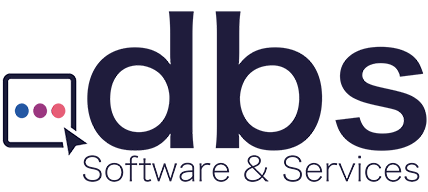
Document management and process automation – Game changers in higher education
Document management systems have long been table stakes in process intensive organizations. In recent years, the application of AI technology in these platforms has expanded their role and accelerated the adoption of process automation to achieve levels of organizational efficiency and productivity never seen before. Colleges and universities are as process intensive as organizations can be. And the state of the world today has applied selective pressure propelling institutions of higher education on an accelerated path towards digital maturity.
Higher education in the information era
The information era presents higher education institutions with challenges in managing the growing volume of digital records, preserving them for long-term access, ensuring compliance with privacy regulations, and integrating diverse data sources across departments. As a result, there may be no industry that benefits more from this new generation of document management systems than higher education, where collecting and managing large volumes of different types of documents is a daily chore.
According to a BCG survey on the state of digital maturity in the higher-education sector, there is strong agreement among institutional and technology leaders in US higher education that moving on-premises IT systems to the cloud, centralizing and integrating data, and increasing the use of advanced analytics are high priorities. This is as recent as February and March 2021.
Operating with reduced faculty and staff, remote work, and hybrid learning environments are but a few of the challenges that need to be solved on an ongoing basis moving forward. Virtually every department can benefit from this technology. But how?
The role of document management in educational institutions
Let’s start with the basics. A campus-wide document management system enables the centralized collection of student, faculty, and staff records in an organized manner, and provides highly secure access to those records. Information is made available to stakeholders at any time, from anywhere, as long as they have the right permissions to do so. These permissions are highly granular, down to the individual document level if desired. To top it off, all activity in the system is logged by event, and can be audited at any time. All of this provides a level of organization and traceability not achievable by the ad-hoc “scan and store in the cloud” methods employed by many institutional departments and sets a solid foundation from which to make information accessible throughout the institution.
Add process automation to the capabilities of document management.
Other tools provided by document management systems which often prove to be invaluable include electronic forms and cross-departmental workflows. Form-building capabilities allow departments to quickly collect raw information and files, create usable electronic documents, and route them to the right users. Likewise, workflows help automate file sharing across participants in order to streamline mundane tasks such as reviews and approvals.
The game-changing benefits of a document management system in educational institutions
Indeed, the benefits of a campus-wide document management system are certainly palpable across departments in any institution. However, we typically see that process intensive functions involved with student intake (Admissions, Registrar, Financial Aid) and operations (HR, Finance, Advancement) can make the most of a document management system to achieve game changing benefits.
For example, by using electronic forms with workflows and integrations, Admissions can easily create and deploy user-friendly flows that are 100% digital and independent of the back-office. This results in an excellent user experience for the applicants and saves the institution from having to pay costly back-office software license capacity for applicants that may not ever become students. Being able to quickly capture and route information securely is also very useful in solving for the unexpected – for instance, in collecting vaccine cards and associating them to student records.
An analysis of the BCG survey mentioned earlier also indicates the following benefits of digital maturity, which apply easily to the use of a document management system:
- Improved student journey
- Increased operational efficiency
- Scaling the power of computing in advanced research
- Innovations in education delivery
Whichever way you slice it, document management and the process automation that follows from it, is a gamechanger.
To be ready for tomorrow, you need to leverage technology tools available today.
The application of AI has opened the door to Intelligent document processing, which can be applied by departments to handle large volumes of documents. This technology can take any type of document, analyze it based on rules (configured or self-learned), and provide insights or take action, such as categorizing and routing by type of document and/or content within them.
For example, transcripts can be pre-analyzed automatically to determine base eligibility to the desired programs in order to expedite the labor-intensive transcript evaluation process. In another use case, invoices can be automatically identified, analyzed, and routed to the right department for approvals. All without human intervention until it is necessary at the right point in the workflow.
Document Management and the higher ed tech stack.
As depicted in Exhibit 3 of the BCG higher education tech stack, the systems of record serve as the “single source of truth” for campus wide information. In this context, Document Management Systems exist neatly in between the SIS and ERP, interconnected to both and providing a secure location from which to facilitate the flow of documents from across the departments.

Systems of record (from Exhibit 3) with added Document Management Layer
The future is approaching faster than you think.
The goal of being 100% paperless has put additional pressure on institutions to accelerate their digital transformation plans, and institutions need to be ready to serve the needs of their stakeholders. Therefore, it’s ever so important that educational institutions make sure they have a document management system in place to be able to support the needs of students, faculty, and staff today and into the future.

dbs Software & Services (dbs) is a long-standing provider of document management and process automation solutions for education and business, and the exclusive provider of Tessi Docubase® in North America.
Tessi Docubase® is an enterprise-grade modular, secure, and easy-to-use document management system that seamlessly integrates with Business Information Systems. Its secure architecture and a broad range of features make it the perfect solution for a wide range of enterprises and use cases.
dbs LiveForms, is a low-code Business Process Automation platform. Its sole focus is simplifying complex processes by automating repetitive steps – from data capture to alerts, notifications, email confirmations, and everything in between quickly, without involving a programmer.
dbs eSign is a cloud-based electronic signature solution that allows users to manage the signing process for a document, from upload to signing and sealing, from any mobile device or computer.


Leave A Comment